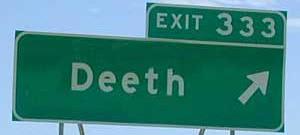To get you up to speed: A half dozen swing states where Republicans won full control of state government in 2010, but President Obama won the winner-take-all electoral vote in 2012, are looking to change the way they allocate presidential electors.
The tool of choice is splitting electors by district, which Maine and Nebraska do already. Those those are small states, and nether has been either close or hyper-gerrymandered in recent years (though we remember that Omaha electoral vote Obama won in 2008).
The states looking at district systems now, however, are all swing states, and most went through pretty shameless re-drawings of the lines in 2011.
To be clear: the electoral college reform I favor is its abolition. In the 21st century a system that can elect someone with fewer votes is indefensible. That said, the Constitution leaves it up to states to choose electors however they want. As late as 1876 - a year all electoral college geeks know well - newly admitted Colorado let its legislature choose the electors.
The partisan intent is pretty transparent here. If you can't win, change the rules; everyone gets that.
But there's another historic dynamic here, a dynamic that we see in Appalachia's Obama-era shift to the GOP, in the rural vs. urban gun debate, and in those election results maps that show vast cattle counties of red with little patches of blue.
The sponsor of Virginia's vote by district bill, Sen. Charles W. Carrico Sr. of rural Grayson County, said “the last election, constituents were concerned that it didn’t matter what they did, that more densely populated areas were going to outvote them.”
Captain Obvious notes that by definition, "more densely populated" is a different way to say "more people live there." But Carrico and his kin are tapping into an old wound that hasn't entirely healed.
America fought this fight in the courts about 50 years ago.
The constitutional purpose of the Census is to allocate representation. As early as 1920 it was clear that rural America was losing population to the cities. A rural-dominated Congress stalled reapportionment for the entire decade. Iowa lost two seats when the day of reckoning came in 1932, dropping from 11 congressmen - all congressMEN then as now - to nine, on our way to the present four. It took us 40 years to recover from the loss of political clout by accidentally inventing the caucuses.
Rural America managed to stall off redistricting within the states three more decades after that. Some especially egregious examples:
New Hampshire House: one township with three people had a Representative; this was the same representation given another district with a population of 3,244. The vote of a resident of the first township was therefore 1,081 times more powerful at the Capitol.
Utah State Legislature, the smallest district had 165 people, the largest 32,380 (196 times the population of the other).
California State Senate: Los Angeles County, California, then with 6 million people, had one senator, as did the 14,000 people of one rural county (428 times more).People didn't vote; land did. It wasn't as much a partisan thing, back in those dinosaur days when segregationist Democrats still stalked the earth. In some states like it Illinois it was rural Republicans clinging to power over urban Democrats. In Tennessee, there was a city-dwelling Republican battling a rural-dominated Democratic machine, upset that his Memphis congressional district had ten times the population of a rural seat.
His name was Baker, and in 1962 Baker vs. Carr went to the Supreme Court. That ruling, along with Reynolds vs. Sims two years later, changed the map forever.
The court rulings meant that districts had to be drawn with substantially equal population, with "substantially" later interpreted as meaning "almost exact." (Ironically, it's the strict enforcement of those exact equal population standards, along with computerized mapping technology, that made today's hyper-gerrymandering possible.)
Iowa's legislature had traditionally been organized on county lines and rural counties had more than a fair share. We struggled through the 60s, going through three maps and two delayed primaries in less than a decade. Eventually, when our clean nonpartisan system took effect with the 1981 map, we got it more right than anyone.
But those rural resentments about lost political power due to lost population still linger in the Capitol and in the countryside, as anyone who's been through a hearing on the road use fund or agland tax credits can tell you. For every set of rural Iowa legislators who got paired up in the 2011 legislative map, an empty seat sprouted in the suburbs. "This is where your district went" wasn't just a joke; it's the reality.
So this latest Republican effort, part of the GOP's retreat from the cities and suburbs into the rural fields and mountains, fueled by resentment of a black president and his urban supporters, is part of a broader arc of American history.
The party labels have flipped over time, but the story is the same. Rural people, old people, established people, white people, the previous generation of immigrants in the door -- they always remember a time when they had more power. They feel threatened by demographic change and want to hang on.
No one ever gives up power easily. But wise people, wise parties, adapt as the world changes around them. Clinging to more power than your fair share, with a gerrymandered map or a rigged system, may keep us barbarians from the gates a little longer. But it will always backfire in the end.

No comments:
Post a Comment